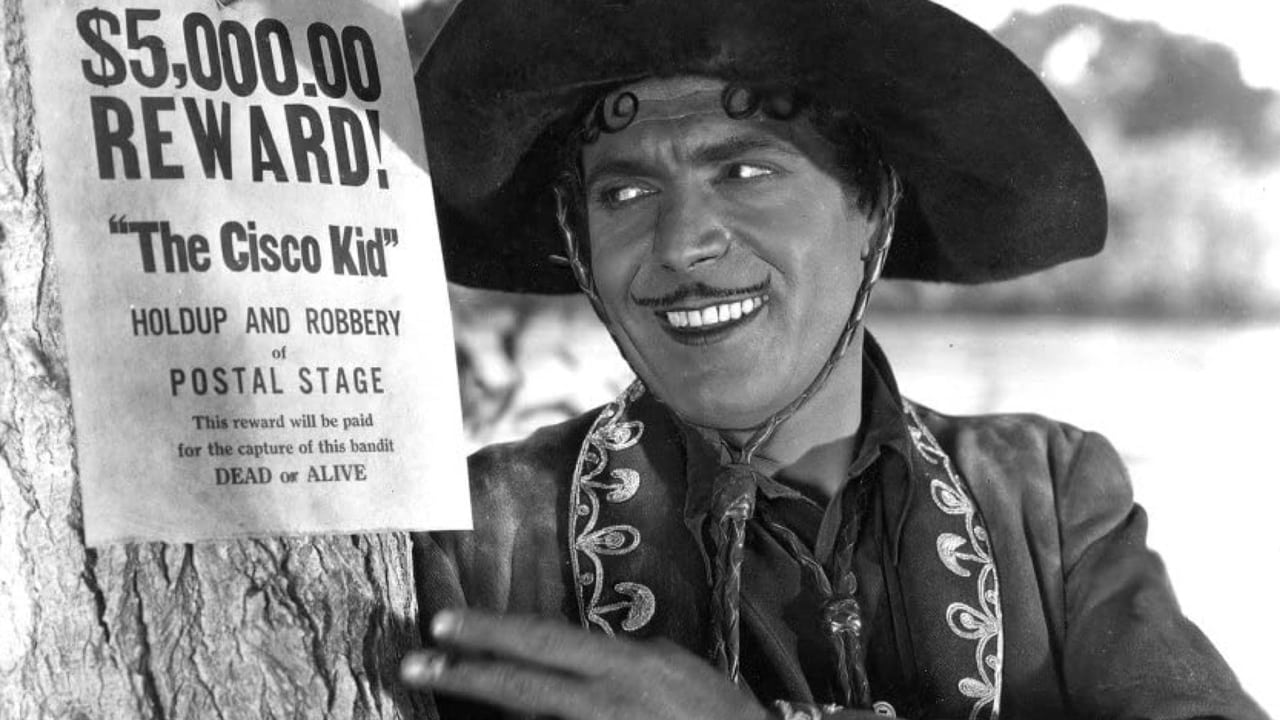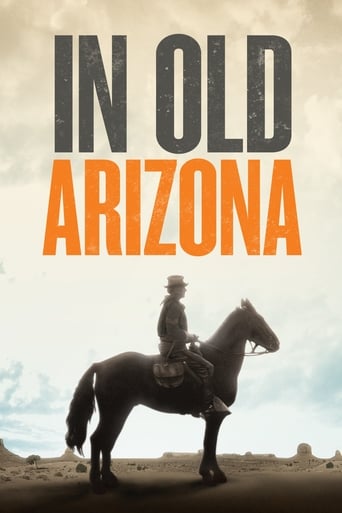

Great visuals, story delivers no surprises
... View MoreBest movie of this year hands down!
... View MoreIt was OK. I don't see why everyone loves it so much. It wasn't very smart or deep or well-directed.
... View MoreThe movie's not perfect, but it sticks the landing of its message. It was engaging - thrilling at times - and I personally thought it was a great time.
... View MoreAs an artifact of cinema history that came along at a point of volatility in the industry, this creaker is worth a look. It was filmed in 1928 - Hollywood's main year of transition to talkies. Considering the time when it was made, it's extraordinary that it was actually shot outdoors in what looks like Arizona. It carefully recreates the look and feel of the late 1890's with authentic looking interiors (chiefly a ranch house and a sleazy saloon populated by grizzled cowhands and fallen women) and props, which include a cylinder phonograph player. Spanish is spoken liberally by the Mexican characters, adding to the realism. The acting is uneven. Warner Baxter's Mexican accent is not believable by contemporary standards, but at least his performance as the swaggering and good natured Cisco Kid is emotionally solid. Dorothy Burgess as the femme fatale overacts and mugs to distraction. Edmund Lowe as the soldier pursuing the Kid is obnoxiously self-confident but provides a refreshing counterpoint with his East Coast accent and slangy vocabulary. The dialogue, especially Lowe's and Burgess's, is delivered broadly and slowly and accompanied by facial expressions that linger long beyond necessity lest the audience miss the point; it also abounds with sexual double meanings. The ending is suspenseful and exciting. A pop song, "Tonia Maria," by DeSylva Brown and Henderson, who were under contract at Fox during the making of this film, plays on the soundtrack both as an overture and as exit music at the end. It doesn't sound right as accompaniment to an 1890's scenario. All in all, a very mixed bag, but reflecting a fleeting time of upheaval in movie history.
... View MoreANYONE WHO GREW up during the period of 1930-60 in the USA, Canada, Timbuktu or anywhere that the Hollywood output is exhibited, would be familiar with "O. Henry's famous Robin Hood of the Old West ". The Cisco Kid and his sidekick, Pancho (sometimes referred to by the nickname of "Gordito" or "Little Fatty" in English) were a mainstay of the "B" Western Movie scene and later, as a Juvie TV Series. The role of the Kid had been passed from Baxter (the first talkie Cisco) to Caesar Romero to Gilbert Roland and then Duncan Renaldo; who essayed the role in both the last Monogram theatricals and the Ziv Television). Pancho/Gordito was perennially the job of Chris Pin-Martin; until Leo Carillo moved into the part with 'partner' Mr. Renaldo.RELATIVELY FEW PEOPLE of this very same period were acquainted with the portrayal of this character by Warner Baxter; whom we are told won an Oscar for his performance as 'Best Performance by an Actor for 1929', the first really full year of sound pictures. This may seem to be a rather strange occurrence for what was a 'Major Motion Picture' and there is no definitive answer for it. However we believe we can offer a plausible and most probable reason for the film's lack of familiarity.AS WE SEE it, the initiation of the CISCO KID Movie Series refined and softened the character; rendering Cisco more palatable for Family Viewing. Whereas we still saw wanted posters with a reward for his capture throughout the life of the series as it changed Studios from 20th Century-Fox to Monogram and passed the right to the Cisco Sombrero from Baxter to Romero, Roland and Renaldo; there was always plausible reasons to believe that poor Cisco was just a misunderstood ex-bandito, with the proverbial 'Heart of Gold.' FURTHERMORE it appears that there may be another reason. Once again this is only conjecture, but there appears to have been a conscious effort by Fox to hold back the release of many of their earliest Talkies from release to the 1950's Television market. This lack of interest by the Copyright Owner, the 20th Century-Fox Film Corporation, may also have contributed to a an apparent neglect of their earliest sound pictures.** WITH REGARD to the film, itself, IN OLD ARIZONA has all of those indicators that label it as being a very early talkie; even up to the point of possibly labeling it as being a primitive sound feature. All of the elements are present that reflect an overall lack of familiarity with the problems of coordinating the sound with the imagery of the movement of the players.THIS IS NOT a slam on the Director. Raoul Walsh was a veteran of the great Silent Films of D.W. Griffith; having portrayed John Wilkes Booth in BIRTH OF A NATION. Mr. Walsh brought the experience of what was probably close to 29 years when he took possession of 'the Chair' to do the picture in 1928.* His innate talents were definitely on display; although he was undoubtedly continuing to learn and grow. It is our amateur opinion that much of the excessive and often awkward insertion of musical numbers in this movie and in so many others of that period was the result of an overwhelming desire by the various Studios to render their products as being close as possible to "All Talking. All Singing and All Sound!" FOR WHAT WE expected from a 'Horse Opera', there certainly was an awful lot of dialogue. Of course, there was a story to tell and durn it if they weren't going to talk us through all of that exposition. In an incredibly short span of on screen time, we are introduced to Cisco, Army Sgt. Mickey Dunn (Edmund Lowe) and the lovely Tonia Maria(Dorothy Burgess); who places herself directly in the collision course path that the two were set on from the very start.THERE IS A decidedly "Adult" viewing rating here. We see the large numbers of Working Girls present in the Gin Mill that this town has all of the Thorns that go along with the Roses in any Bouquet. This town's appearance and reputation would certainly not put it in good standing as fit subjects for Walt Disney or Norman Rockwell to use in their projects.ALONG THE SAME line, Director Walsh leaves us with no doubt that the Senorita Tonia Maria was less than a girl next door type. In her very first appearance on the screen, we see her dispatching a 'John' from her house; cautioning him to high tail it, for Cisco is arriving presently. Her love of money is made explicit as she obviously seems interested in more and more of it. Cisco doesn't realize it; but he is being played as a chump. Her favors are bestowed to many others. Unknown to the Kid is the undeniable truth that to her, he is just another 'Trick'.THE HOLD-UP of the Stagecoach by Cisco at the beginning of the story and the comic relief situation of having our Anti-Hero meet up with the unsuspecting town Sheriff and equally clueless Sgt. Dunn in the town Barber Shop; while he was getting a shave and taking a bath, all were important preludes to a most surprising and gruesome a climax.UNTIL WE MEET again, Schultz and I want to say, "GOOD-BYE AMIGOS, SEE YOU SOON!" (Roll the Credits, Schultz!) See You Next Time!NOTE: * We read that Raoul Walsh was set to portray Cisco in this film; but just prior to the scheduled shooting time, he was badly injured in an auto accident, losing an eye.NOTE: ** A good example of an early sound movie held back by Fox is SOUP TO NUTS (Fox, 1930) which introduced the movie audiences to Ted Healy & The 3 Stooges. POODLE SCHNITZ!!
... View More"In Old Arizona" was made in 1928 at a time when sound was still a novelty in films. As such you can see in this film sequences that purely demonstrate sound but add nothing to the story. For example, in the opening scene after the stagecoach leaves, the camera moves to a mariachi band that appears out of nowhere to play a song, and later a scene begins with a quartet warbling a little ditty before moving over to the principle characters.The story centers on the Cisco Kid (Warner Baxter) who is a likable rogue who robs stagecoaches (but not the passengers) and has a price on his head of $5,000. It seems that everyone knows the kid on sight except the town barber. His girlfriend Tonia Maria (Dorothy Burgess) is an obvious pre-production code prostitute, who "entertains" him when he is not robbing stagecoaches.The army is asked to do something about all of the robberies. They send Sgt. Mickey Dunn (Edmund Lowe) to investigate. Along the way he meets Tonia Maria who seduces him (off screen of course) and the two plot to capture the Kid and claim the reward. Naturally the Kid uncovers the plot and prepares a surprise for the sergeant and his unfaithful girlfriend.This film is rather dated when watched today. It is over talkative and has just awful acting in many of the supporting roles, particularly the actor who plays the stagecoach driver. But you have to remember that this was the first year of sound movies. Director Raoul Walsh used outdoor microphones for the first time in a major studio production. You'll notice a few "silent spots" in the out door scenes.The three leads are OK but the Mexican "accents" of Baxter and Burgess are laughable. Actually as hard to believe as it was, Baxter won the 1929 Academy Award for his role. Walsh was supposed to play the Lowe part but lost an eye in an accident about this time.J. Farrell MacDonald appears early in the film as an Irish stagecoach passenger.
... View MoreThis is likely the first sound western film as well as the first sound film done out-of-doors. Suggested by "The Caballero's Way", a short story by William Sidney Porter (O.Henry), the main character, "The Cisco Kid", has been considerably upgraded. Porter's "Kid" was a ruthless bandit who didn't like people who got in his way, especially sheriffs. When a sheriff seduced the "Kid's" girl-friend into betraying him into an ambush, the "Kid", ruthlessly clever, took his revenge in a sadistic fashion. In case one might want to read the story, I will say no more. In the film, the "Kid" is a bandit right enough, but a sympathetic one, and sufficiently clever to outwit a sheriff who persuades the girlfriend to disarm the "Kid". She does this by charming him into taking off his gun when he meets her for a tryst. Don't worry, the "Kid" is one up on this trick, too, but protects himself in somewhat gentler fashion than in the story. If one could view this film today it would seem a museum piece, but not without some pictorial charm. I remember the photography as very pictorial, as with some later sequels, and there is a scene of bacon frying over a campfire that rather startled 1929 film goers with the realistic sound.
... View More